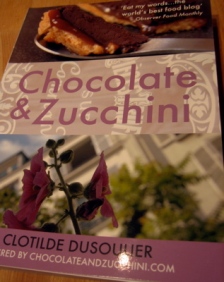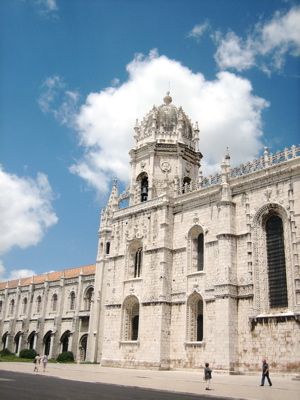Conversations over the past few weeks about Royal Ascot have followed two patterns depending on who I’m talking to. With Americans back home, the conversation usually starts with the question: What’s Royal Ascot? Answer: a horse race that the Queen likes to attend.
With Brits or Americans in London, the question is usually: Have you got a hat, and where are you sitting?Answer: Yes, and the Royal Enclosure. Logical follow-on question: “Umm, how did you end up in the Royal Enclosure? (pause) No offense or anything.”
Royal Ascot lasts about a week – from Tuesday through Saturday. There are six races a day run at the Ascot racecourse (which sits next to Windsor, explaining the association with the royal family, I suppose).
As is true about many British traditions, there’s a lot of history and baggage about Royal Ascot that I’ll probably never appreciate, but here’s my point of view anyway:
Admission tickets to Royal Ascot come in three types: Silver Ring (£15 per day), Grandstand tickets (£54 per day), and Royal Enclosure tickets (£78 a day). The goal for most attendees is a combination of getting drunk with friends and wearing nice clothes. In the Royal Enclosure, the goal is just to be invited.
Traditionally, you have the privilege of paying £78 for a ticket only if you’re (1) a member of the Royal Enclosure; or (2) “sponsored for membership” by a member who’s attended at least four times. Membership, I assume, means you’ve got a link to high society, which I definiely do not. [And this year, for the first time in the 300-year-old history of the race, you can buy your way in to the Enclosure with corporate packages starting at £530 a pop, which is definitely not the way I got in.]
So, the question remains how did an arriviste like me end up in the Royal Enclosure? Well, I thank my friend Jane for cluing me in to this (for lack of a better word) trick: As an American, you apply to the Enclosure through the US Embassy, so perhaps technically, you’re in the Royal Enclosure as a guest of the US Ambassador. The applications are accepted on a first-come, first-served basis. If you’ve gotten in, the US Embassy writes you a letter to say your application is accepted and encloses a Royal Enclosure ticket form, which you fill out (with payment details, of course) and mail to “Her Majesty’s Representative.” I actually never received my ticket in the mail, but I did get a receipt telling me my credit card had been charged.
Because my ticket didn’t arrive in the mail, when I first arrived at the Ascot racecourse, I went to a Royal Enclosure “lost ticket” desk. The desk was total chaos, and it turns out that for the Enclosure, you don’t get a ticket. Rather, you get a pin that’s so ridiculously easy to copy (i.e., my name was written in with a sharpie), I wonder about all the fuss it takes to get in to the Royal Enclosure.I’m getting ahead of myself, though.
Once Jane and I (and our friend, Sahar) learned we were going to the Royal Enclosure, we set to work on dressing appropriately. Although everyone, no matter what section, dresses up for the races, there are no strict rules about it unless you’re in the Royal Enclosure. The key restrictions are: men wear top hat and morning coats; women wear dresses and a hat that covers the crown of your head (and no scandalous things like – gasp – trousers).
HATS! Jane, Sahar and I figured if we were going to pull this thing off, we’d do it right, so we went to a milliner named Emily Birch, who’s a friend of a friend. Emily has her own millinery business outside of her day job, which is to work for the Queen’s milliner. Having a hat custom made is known as “model millinery,” and with Emily’s help, I went through a crash course on differences between department-store hats and model millinery.
The three of us brought Emily our dresses, and then we tried on samples in her home studio to get a feel for what shape of hat would be flattering. I chose a stylish variation on the traditional brimmed hat, which means mine has a brim that broke and folded up in the back, and I wore it at a sharp tilt (it’s kept secure with an elastic that you run under your hair).
The details that Emily dreamt up were beautiful: the sinamay was overlaid with an ornate, lacy pattern; the brim was edged with a hand-sewn grosgrain; the four types of feathers trimming the hat were hand-dyed to match my dress and again sewn (not glue gunned) to the hat. The photo to the above left shows Jane’s hat and mine. Fabulous, no?
Two fittings and several weeks after our initial meeting, Emily had created beautiful and unique hats for the three of us. Her hats cost upwards of £300, which is pricey, but the compliments Jane, Sahar and I received on our hats (and all the little girls who openly stared and smiled at our hats) – well, that was priceless. (I see a MasterCard commercial in the works, don’t you?)
The trains from Waterloo to Ascot were standing-room-only packed, and these are trains that run every 10-15 minutes from Waterloo. A lot of passengers had started drinking early in the morning and kept up the partying while on the train, which I guess is fun for everyone except the people on the train who are sober (like me).
It was a rainy day, but we loved our time at the races. We arrived just in time to see the Royal Procession roll in on the race track (i.e.,the Queen and her guests arrive by carriage from Windsor), which signals the start of racing for the day. Because the Royal Enclosure includes a slice of lawn by the finish line, we were able to get right up by the fence within 15 feet of the passing carriages, and Jane took this fantastic photo of the Queen and Prince Philip:
The three of us stuck around for four of the six races yesterday, and not only did we people watch, but also we placed bets in three races, picking either the winner or second-place winner every time. It’s always nice to be a winner, especially when a few of our picks were underdogs with odds of 34:1 for a win payout, but even if we hadn’t won, the races were fun to watch. There was one short race, the Golden Jubilee Stakes, that took place only on the straightaway portion, so in that one, there were 21 horses thundering down the track, which was pretty colorful and dramatic (photo below):
Even though each race is over in a matter of seconds, it’s exciting to watch and cheer for “your” horse, and I have to admit I was glad not to be in the other parts of the grandstand, mostly because they looked so packed and crowded as to be uncomfortable. The lawn/concourse level of the Royal Enclosure, for example, had nice park benches spread out in a spacious way, and in contrast, the lawn in the grandstand area nearby looked packed with people sitting on blankets or crowded together by the fence.
There’s been criticism in the papers that the Royal Enclosure is now set up so attendees don’t have to mingle with the “regular” people in the other sections, but rather than taking a point of view (like this guy) on the rightness or wrongness of the Royal Enclosure’s exclusivity, I’m just stating a fact that it’s nice not to be in an overcrowded space.
Overall, despite the gray, rainy weather yesterday, I had a great time at Ascot and would go again. In sunny weather, it’d be a perfect summer experience. And maybe next year, being the goal-oriented yuppie that I am, I’ll aim to be in the Queen’s box within the Enclosure:
































